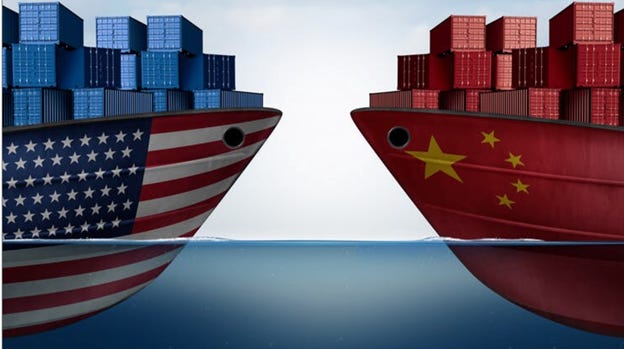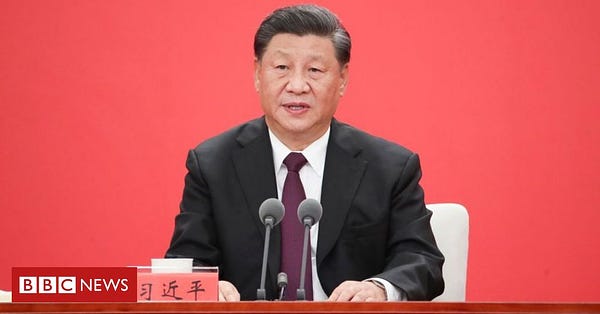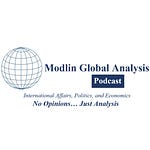This week we are going to continue focusing on some questions regarding the global, political, and economic environment and we will specifically look at some global trends regarding China and the Middle East. Spoiler alert: While I have some thoughts, I do not claim to have all the answers to these questions. Thank you for subscribing, and if you enjoy reading this, please forward the newsletter to your friends. ~ Kevin
As I mentioned last week I enjoy sitting down and making predictions about what will happen in the world. I believe it is an excellent test of critical thinking skills that hones my desire to learn more and my sense of realism about how power operates in the world. This practice also provides a good dose of humility when I am forced to admit that I am far from perfect at predicting the future. There are many good lessons we can learn from the many tests regularly provided by world events. This week our focus is on global dynamics. This is because I see several interesting trends that are worth exploring and providing an avenue for deeper discussion. Please feel free to comment below about questions that are on your mind right now.
Looking from the perspective of each country, how deep and strong are the tensions between the United States and China?
I believe this is a very important question because of the implications and because of what I sense is a distinct change in relations. Politicians mold the public’s perceptions of how the world operates, but the public molds and conditions many of the choices available to politicians. This is the case in the present relations between China and the United States. Many polls show a considerable increase in the number of Americans who now distrust China. That number has gone from roughly half of the population a year ago to nearly three-quarters at present. I do not sense that will change soon and may even increase as the effects of Covid-19 continue to permeate our lives.

These tensions are not limited to the United States. Many parts of Europe are also distinctively changing relations with China. This can frequently be seen in that region’s policies, no doubt related to public sentiment, toward Chinese telecommunications companies. Recently there was a robust political debate about tik-tok, which is owned by a Chinese technology firm. I believe this single example illustrates a deepening emotional and cultural divide between the U.S. and China. However, it also shows how existing relationships continued to mold outcomes. In other words, its likely in the future that the two sides will maintain robust economic activity as political divisions continue.
How much is China’s emphasis on the dual circulation economy about transitioning away from the Belt and Road initiative?
I believe that China’s approach of emphasizing domestic consumption and global exports can provide insight into the thinking of China’s leadership about its place in the world and, equally important, what the world will look like. I think this dual circulation approach allows for a full range of scenarios to materialize over the coming decade. We may see China capitalize on investment opportunities in its region or we could see them choose to minimize that focus, as generally outlined in the Belt and Road Initiative that financed regional development projects. Not all of these initiatives had the same bang for the buck China and others would have expected. It’s also likely that, due to the cost of Covid-19 throughout the developing world, there will be strains on the budgets for numerous countries throughout Asia and Africa. This makes many projects riskier for China to initiate. At the same time, it may be a risk for China to put too much emphasis on domestic consumption with the expectation that the demand will automatically meet the supply. Given these two challenges, it’s not surprising that China is opting for an approach that incorporates a mix of these components.
How will the quad relationship evolve?
Some of the answers to this question relate to what transpires with the above issues. Specifically, the quad relationship is the informal phrase used to denote the relations between the U.S., India, Japan, and Australia. For the U.S., two of these three countries are allies with security guarantees. Since the George W. Bush administration, India has been increasing ties to the United States. The increased frequency of these talks are no doubt influenced by the continued rise of China in the region and India’s desire to play a counter roll. There have been increased talks about coordination engagement that are more extensive. However, these discussions are not fully committed, nor are they anything in line with a change from existing security guarantee alliances. I expect that regardless of domestic political considerations there will continue to be advancements in these relationships. It will be important to see how these partnerships incorporate other regional actors in Asia and how those actors respond to China. No doubt there is broad consensus in Congress for increased military cooperation amongst these countries. However, I expect relations to continuously evolve among these nations as they seek to determine the degree of commitment, will, capabilities, and perception of the threat posed by China.

What does the future of relations look like between Israel and its Sunni neighbors?
Recently Sudan, in part of its negotiations with changing relations with the United States, announced that they would also have diplomatic relations with Israel. This makes for a distinct shift in relations in the Middle East. I would argue that this is not a peace agreement as such, but it provides a foundation to hopefully lessen factors that contribute to tension, which may over time evolve toward an agreement. It’s a much more incremental approach that does seem to reflect the regional environment. While the future is never easy to predict, it’s clear the tensions between the Sunni and Shia worlds in the Middle East will continue and that form of regional balancing will characterize the region. These changes in relations between Israel and its Sunni neighbors reflect these perceptions.
News:


I am enjoying the chance to share these newsletters with you in the form of the new podcasts and appreciate your continued feedback. You can reply to this email or leave your comments below. I sincerely enjoy chatting and learning what folks think. Thank you ~ Kevin















Questions II